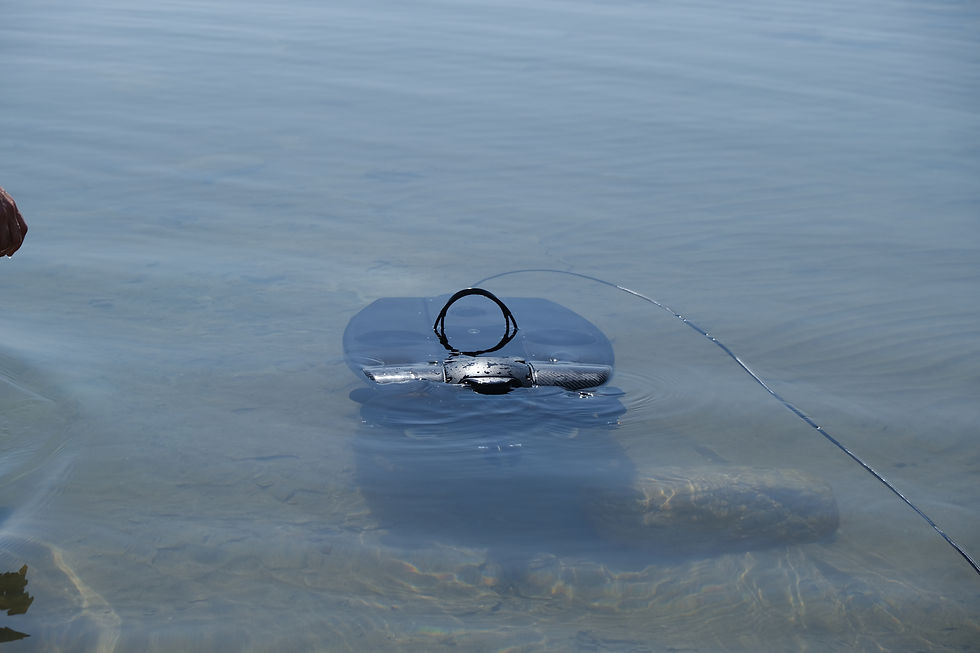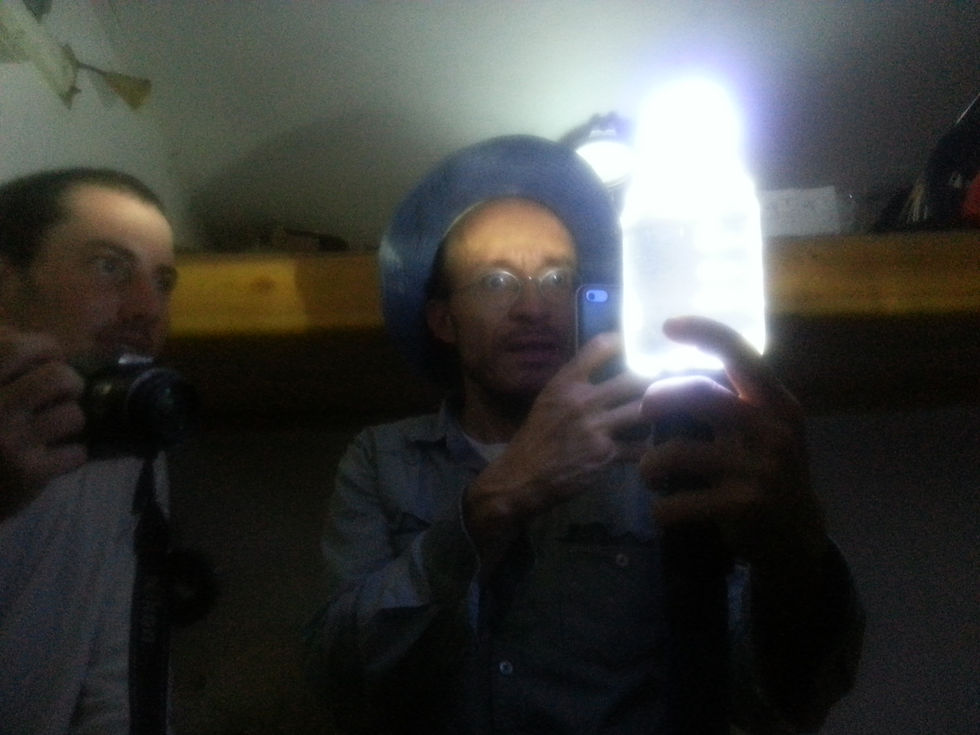REMOTELY OPERATED VEHICLE (ROV)
The Dead Sea Observatory operates a state of the art underwater remotely operated vehicle, the Deep Trekker Revolution ROV. A sampling of its missions include: observing in-situ water column and lakefloor halite (salt) precipitation, seafloor current and erosion formations, sediment transport and water and sediment sampling. Its primary feature is putting our eyes underwater, with High Definition live video. The 300m depth rating will allow the deepest parts of the Dead Sea to be explored (~280m). The manipulator arm has also been equipped with a water sampler and a GSI designed sediment sampling tool. Advanced features include: Blueprint Oculus dual frequency multibeam sonar for seeing through turbid water even at great distances, and a Blueprint Sea Trac USBL positioning system that uses sound to give our underwater location, fixed to GPS, so we can record image locations and return to monitor sites of interest.




TIME LAPSE CAMERA (TLC)
An array of TLCs is used for documenting processes during storms and extreme conditions, and for long term documentation in remote locations. We use Brinno 200Pro cameras. We document surface processes, formation of halite crystals, level of water in sinkholes, and interactions between flashflood runoff and sinkhole recharge to the underground salt karst system.
.jpg)






.jpg)






UNDERWATER PHOTOGRAPHY
For highest underwater photography we use a Nikon D810 camera cased in an Aquatica housing and a giant port dome and a flat dome, and a Sea & Sea YS-250pro strobe. Using these high resolution pictures we can determine textures of active halite deposits (resolution of ~10 microns). In addition we use a gopro black 4+ camera cased within a hugyfot housing rated to 200 m, which can be used with a 100 m cable and video screen for live monitoring on board. The gopro is used with video light (ikelite 2800). We also use underwater TLC to document halite growth and settling on the lake floor. Currently, most of the underwater photography missions are carried out with the ROV, unless we need the highest performance of Nikon D810.










MEASURING EVAPORATION – EDDY COVARIANCE AND HEAT BUDGET
We measure evaporation and sensible heat by means of eddy covariance towers, equipped with a 3-D Sonic Anemometer (WindMasterPro, Gill, UK) and a Li-Cor Open Path CO2/H2O Gas Analyzer (LI-7500A, Li-Cor, USA). The high frequency data (20 Hz) is stored in a Li-Cor data logger and half-hourly mean fluxes are calculated on site using the EddyPro software by a SMARTFLUX module (Li-Cor, USA). To gain a complete heat flux observatory we measure net radiation (Kipp and Zonen CNR4) over the water surface, and thermistor chains in the water column to obtain the water heat storage and its rate of change.














PROFILERS AND WATER COLUMN MEASUREMENTS
Depth profiles of temperature and turbidity are measured using CTD (Seacat 19plusV2, Seabird, with Wetlab C-star transmissometer). Salinity and chemical composition are determined following sampling water with niskin bottles (General Oceanics).














MEASURING HALITE CRYSTALLIZATION PROFILES
The macroscopic rate of halite growth along the water column was inferred by in situ measurements using a novel method that employs a vertical steel cable hanging in the water column. A steel cable was anchored to the seafloor by a weight, at a depth of 55 m and kept vertical by a tension buoy. The steel cable served as a platform for halite crystallization. The diameter of the cylindrical halite crystals coating was measured monthly at depth intervals of 1–5 m.
















DISTRIBUTED TEMPERATURE SENSING (DTS) – FIBER OPTICS
A high-resolution temperature profiler was designed to continuously record the Dead Sea thermal stratification. The profiler is based on fiber-optics temperature sensing and was designed to cover the epilimnion, metalimnion and the upper part of the hypolimnion. The fiber optic cables were specially designed for our needs by Brugg Cables (Brugg, Swizerland), to fit the required resolution of this study and to function in the aggressive hot and salty conditions of the Dead Sea. The 55 m profiler is a high-resolution optic fiber hung in the water from a specially designed anchored buoy. The DTS instrument is a Sensornet Oryx1 (Sensornet, London, England). The depth resolution of the profiler is 9 cm, covering 53 m of the upper water column, data is integrated to a profile every 5 minutes, installed over more than 7 months, covering the entire seasonal stratification period (See publications by Arnon et al.).






LABORATORY FACILITIES
Density meter
Accurate density measurements are critical for our study to overcome the analytical limitations chemical analyses; the seasonal and depth variations of salinity in the Dead Sea are up to 2%, which is approximately the accuracy of major ions in hypersaline brine. The use of high accuracy laboratory density meter, DMA 5000 (Anton Paar, Austria) solves this problem, since the accuracy is much finer than the natural signal.
Shaker incubator
Shaker incubator (Qmax4000 Thermo) is used to keep brine samples at a target temperature (typically temperature of the Dead Sea at a certain depth), at a tenth of centigrade accuracy.
Determining empirical degree of halite saturation
Precise determination of the degree of halite saturation in the Dead Sea is not trivial, since the solubility of halite in the Dead Sea changes continuously with the change in the brine’s composition as halite precipitates. The standard methodologies are limited by the analytical precision, which is larger than the natural signal variation. We developed a procedure of determination of the empirical degree of halite saturation (EHS), based on the difference in quasi-salinity of a brine sample in the presence of excess salt, as described in Sirota et al. 2016).






_edited.jpg)








